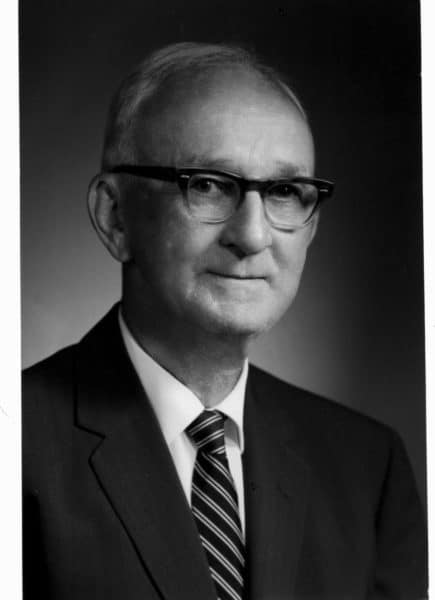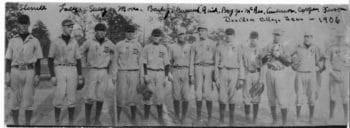DAVIDSON HISTORY
The Fighting Parson

Benjamin Rice Lacy, Jr., the Fighting Parson (photo courtesy of Davidson College Archives)
Benjamin Rice Lacy, Jr., grandson of Davidson president Drury Lacy and a 1906 Davidson graduate, was nicknamed “The Fighting Parson” after his actions in World War I. According to the Davidsonian, while in college Lacy “stood prominent in athletics, oratory, and the class room. He played on the Varsity baseball team and was quarterback on the football team, and was known familiarly as ‘Ben.’ In his Sophomore year he was class president, and in his Senior year took honors by winning the Senior Orator’s medal.”

1906 Davidson Baseball Team
Lacy was the first Davidson graduate to win a Rhodes Scholarship, and, during his three years at Oxford, became the lightweight boxing champion of England. He then attended Union Seminary in Richmond, where he graduated with honors. After graduation, he taught at the Donald Fraser School, a private college preparatory school for boys in Decatur, Georgia, and then worked as a home missionary and assistant pastor of the First Presbyterian Church in Raleigh.
When the United States entered World War I in the spring of 1917, Lacy enlisted in the army. According to the Roanoke Rapids Herald, as he was preparing to sail for France as an army chaplain in the 113th Field Artillery, he was offered a captain’s commission in the regular army, if he would give up his chaplaincy. He declined, but “in crucial times on the battlefront, when the 113th was short of officers, he served as reconnaissance and liaison officer.” In addition to holding church services, and in an effort to divert his men from their habit of drinking heavily during their time off, he organized and captained a baseball team and organized camp musicals and theater performances.
Lacy was recognized by the army with the Silver Star for his actions during the battle in Bois de Avocourt, France, on September 26, 1918. According to his Silver Star citation, he exhibited “gallantry in action while serving with the 113th Field Artillery, American Expeditionary Forces …in rendering aid to the wounded under heavy enemy fire.”
A month later, he distinguished himself further in battle, as evidenced by a letter he wrote to his father in October:
“I believe I have done everything in this last drive. I acted as No. 1 in 1st piece of Battery C for a little while during the first barrage. No. 1 pulls the trigger and opens and closes the breech…Near our position were the heavy German guns I must have written you about. My hurriedly organized crew did fine work and we shot into a town, a woods infested with machine guns and an important enemy road. The next day the General came down and gave me a good word for my work.”
Later, during a shortage of officers, he was assigned to work at the front. “The next day began four days of curious work for a preacher. I ran a wire near to the front line…I had hardly got my lines laid when I saw a German gun change position. I directed the fire of one of our batteries upon the hedge behind which they placed the gun…Later that day I directed fire on other targets that appeared…We were constantly under fire and I had the time of my life seeing and directing our own fire…”
A letter from another Davidson serviceman, Lt. S.M. Gattis, published in the Davidsonian on January 19, 1919, further describes his actions. “The other day when Fritz’s batteries were extremely naughty he took a reel of wire, a telephone and a telescope and crawled out to a high hill between the lines and from there directed the fire of our batteries. He did this for three days and running and we demolished several enemy batteries, put their roads practically out of commission…One particular instance is worth mentioning. He caught sight of a building that looked like a barracks way back of the line. He telephoned back its exact position, being one of the most skilled artillery officers in the outfit, and ordered concentrated fire on it, all guns firing at the same time. When the twelve guns spoke, the building collapsed. Then the parson scattered his fire and took them from all sides as they poured out of the building. There were several connected on to the telephone with him, and all swear he said: ‘Give ’em hell.’ He swears he didn’t.”
Benjamin Lacy left the service in April of 1919. He served for seven years as the pastor of Central Presbyterian Church in Atlanta, and then became president of Union Seminary, where he remained until his retirement in 1956. He died on August 3, 1981.
Nancy Griffith
Nancy Griffith lived in Davidson from 1979 until 1989. She is the author of numerous books and articles on Arkansas and South Carolina history. She is the author of "Ada Jenkins: The Heart of the Matter," a history of the Ada Jenkins school and center.


